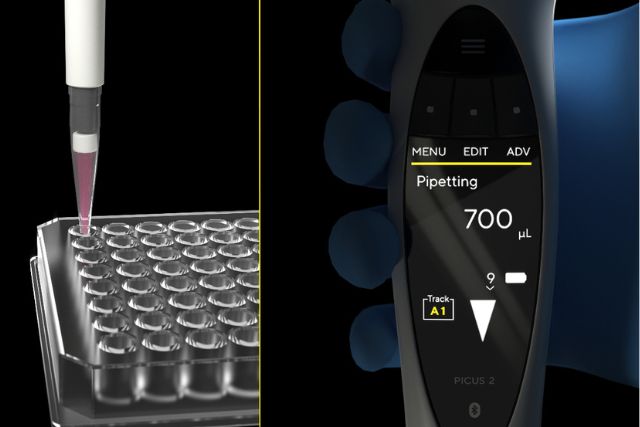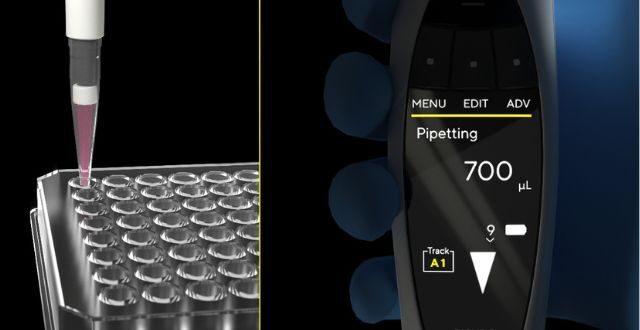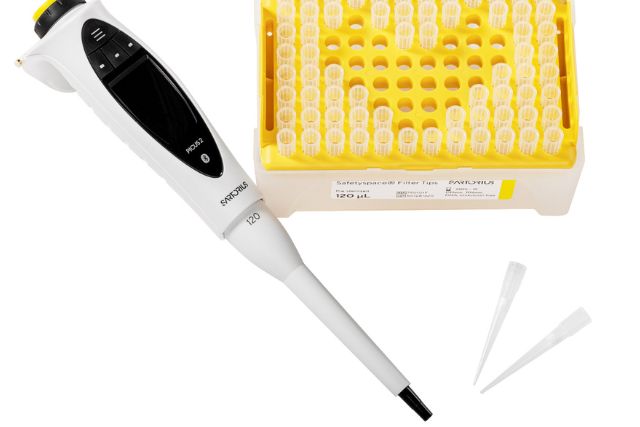
Overview
- Post By :
- Source: Microbioz India
- Date: 15 Jan,2025
For our latest interview, we spoke with Ms. Sagarika Adiraju, Application Manager at Sartorius, and a highly experienced professional in the field. Ms. Sagarika holds a post-graduate degree in Biotechnology from Vellore Institute of Technology, India, and brings over 10 years of experience as a Research Scientist and Product Specialist for Greater India at Sartorius. Her expertise spans protein biochemistry, filtration, and liquid handling technologies. In this interview, she shares her insights into the design, features, and advancements of the Picus® 2 electronic pipette, one of the most advanced pipetting instruments available today. Designed to enhance accuracy, precision, and ergonomics, the Picus® 2 supports a wide range of laboratory applications—from basic molecular biology to routine clinical and sports medicine diagnostics. With customizable features like adjustable channels, both programmable and non-programmable modes, and several intelligent pipetting modes, it’s built for user efficiency and comfort. Join us as Ms. Sagarika explains how the Picus® 2 is transforming laboratory workflows worldwide, along with the innovative technologies behind its success.
Can you briefly introduce the Picus® 2 electronic pipette and its main applications in laboratory environments?
The Picus® 2 electronic pipette is an exquisite and easy to use pipetting tool that is suited for any area where pipetting is required. It has an ergonomic shape so it’s comfortable to use for long periods. The pipette incorporates a variety of options which include multitude of pipetting modes, speed and volume adjustment, and so forth which make the pipette convenient for use in different purposes.
It operates electronically and therefore reduces muscle stress since basically all actions that need to be performed by the user such as pipetting steps and tip ejection are carried out automatically.
The time taken to conduct pipetting procedures minimizes the strain on the users and tip ejection which is entirely electronic guarantees the users comfort. It weighs 100g which is extremely small and makes it physically easy to perform pipetting.
Main applications include:
- Molecular Biology: For tasks such as PCR setup, DNA/RNA extraction, and cloning.
- Cell Culture: Used for transferring liquids, reagents, and media with precision.
- Clinical Diagnostics: Involved in sample preparation and assay workflows.
- Environmental Testing: For sampling and analyzing water and soil.
- Pharmaceutical Research: Aiding in formulation and testing processes.
Overall, the Picus® 2 is designed to improve efficiency and accuracy in diverse laboratory environments.
How does the Picus® 2 ensure high precision and accuracy in pipetting, and what technological advancements contribute to this performance?
The Picus® 2 electronic pipette ensures high precision and accuracy through several key features and technological advancements:
- Advanced Calibration System: The pipette incorporates a sophisticated adjustment system that allows for regular self-checks and adjustment of various liquids, ensuring consistent performance over time.
- Optimized Mechanics: Its ergonomic design minimizes user fatigue, which can affect pipetting accuracy. The lightweight construction and balanced weight distribution enhance control.
- Electronic Control: The electronic mechanism provides consistent liquid handling by eliminating variations that can occur with manual pipetting. Users can set and adjust pipetting speeds and volumes precisely.
- Multi-Channel Options: The Picus® 2 offers multi-channel configurations, enabling simultaneous pipetting of multiple samples, which improves throughput while maintaining accuracy.
- Smart Pipetting Modes: Features like “reverse pipetting” and “mixing” modes allow for more complex protocols, further ensuring accuracy and repeatability in tasks such as dilutions and sample preparations.
- Intuitive User Interface: A clear display and easy navigation make it simple for users to set desired parameters, reducing the likelihood of errors during operation.
These advancements work together to deliver high precision and accuracy, making the Picus® 2 a reliable choice for a wide range of laboratory applications.
What are some of the standout innovations or unique features in the Picus® 2 that contribute to its versatility in different types of labs?
The Picus® 2 electronic pipette boasts several standout innovations and unique features that enhance its versatility across various laboratory environments:
- Customizable Pipetting Modes: The Picus® 2 offers multiple pipetting modes, including standard, reverse, and multi-dispensing, which accommodate a wide range of applications, from simple transfers to complex protocols.
- Ergonomic Design: Its lightweight and ergonomic structure reduces hand fatigue, making it suitable for prolonged use in high-throughput labs.
- Volume Range Variety: The Picus® 2 is available in different volume ranges, catering to a variety of tasks—from microliters to milliliters—making it adaptable to diverse laboratory needs.
- Multi-Channel Configurations: Options for 8-, 12-, channel setup allow for simultaneous pipetting, increasing throughput and efficiency in applications like plate assays.
- Bluetooth & USB: The ability to connect to computers for software updates and data management facilitates easy integration into digital lab environments.
- Lightweight Construction: The materials used in its design make it easy to handle, enhancing user comfort without compromising durability.
These features collectively contribute to the Picus® 2‘s adaptability in various lab settings, from clinical diagnostics to research and environmental testing.
Could you highlight how the battery life has been optimized in Picus®2? What maintenance practices should users follow to ensure longevity?
The Picus® 2 electronic pipette has been developed with excellent battery life allowing it to be used more effectively in laboratory applications. Some of the details regarding its battery optimization are as follows:
- Low Power Consumption: The pipette is designed with low power component which help to lessen the energy used when in operation, thus increasing time between the recharging the battery.
- Intelligent Sleep Mode: After a period of inactivity, the Pipette® 2 will automatically go into a sleep mode that will save battery while ensuring it is ready for use.
- Short Recharge Time: It is fitted with rapid charging capability which ensures that the users do take a lot of time to recharge the battery.
- Battery Charge Indicator: A battery power display system that is easy to see has been installed to warn the users when power is low to avoid cut-off during critical tasks.
Maintenance Practices for Longevity – To promote the life of the Picus® 2, these maintenance practices are advisable:
- Verification of Calibration: Recalibrating the pipettes regularly is the only way to ensure that the volumes delivered are accurate and repeatable.
- Use Compatible Tips: Recommended pipette tips must be used at all times as failure to do so can impact on the accuracy and the precision of the results.
- Follow User Guidelines: Follow the guidelines that the manufacturer has given for usage and maintenance and which designates that the pipette is used effectively.
If these measures are executed, Picus 2 electronic pipette performance and durability will be properly taken care of.
How does Picus®2 help users manage and store their data, and are there connectivity features for integrating with lab software?
The Picus® 2 electronic pipette offers several features to help users manage and store their pipette settings effectively, along with connectivity options for integrating with laboratory software:
Data Management Features:
- Memory Storage: The Source
 Mind Uncharted Explore. Discover. Learn.
Mind Uncharted Explore. Discover. Learn.





